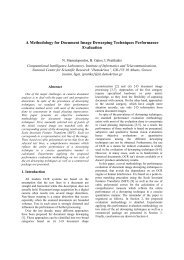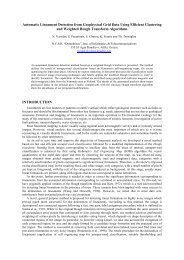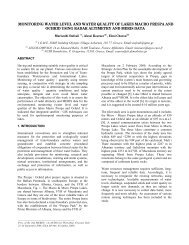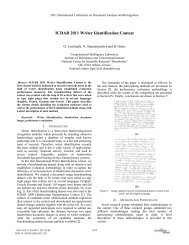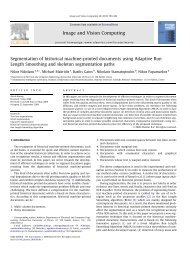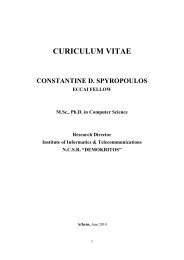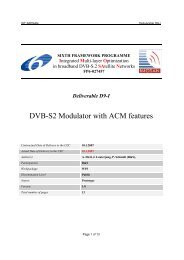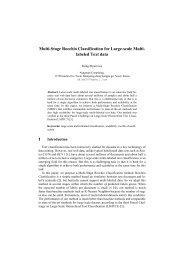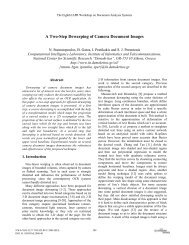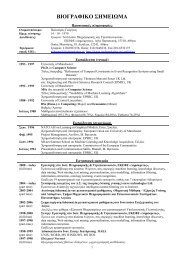TMS320C6713B Floating-Point Digital Signal Processor (Rev. A)
TMS320C6713B Floating-Point Digital Signal Processor (Rev. A)
TMS320C6713B Floating-Point Digital Signal Processor (Rev. A)
You also want an ePaper? Increase the reach of your titles
YUMPU automatically turns print PDFs into web optimized ePapers that Google loves.
PARAMETER MEASUREMENT INFORMATION<br />
SPRS294 − OCTOBER 2005<br />
Tester Pin Electronics<br />
Data Sheet Timing Reference <strong>Point</strong><br />
42 3.5 nH<br />
4.0 pF 1.85 pF<br />
Z0 = 50 <br />
(see note)<br />
Transmission Line<br />
Output<br />
Under<br />
Test<br />
Device Pin<br />
(see note)<br />
NOTE: The data sheet provides timing at the device pin. For output timing analysis, the tester pin electronics and its transmission line effects<br />
must be taken into account. A transmission line with a delay of 2 ns or longer can be used to produce the desired transmission line effect.<br />
The transmission line is intended as a load only. It is not necessary to add or subtract the transmission line delay (2 ns or longer) from<br />
the data sheet timings.<br />
Input requirements in this data sheet are tested with an input slew rate of < 4 Volts per nanosecond (4 V/ns) at the device pin.<br />
Figure 25. Test Load Circuit for AC Timing Measurements<br />
signal transition levels<br />
All input and output timing parameters are referenced to 1.5 V for both “0” and “1” logic levels.<br />
Vref = 1.5 V<br />
Figure 26. Input and Output Voltage Reference Levels for AC Timing Measurements<br />
All rise and fall transition timing parameters are referenced to V IL MAX and V IH MIN for input clocks, V OL MAX<br />
and V OH MIN for output clocks.<br />
Vref = VIH MIN (or VOH MIN)<br />
Figure 27. Rise and Fall Transition Time Voltage Reference Levels<br />
Vref = VIL MAX (or VOL MAX)<br />
POST OFFICE BOX 1443 • HOUSTON, TEXAS 77251−1443<br />
101



